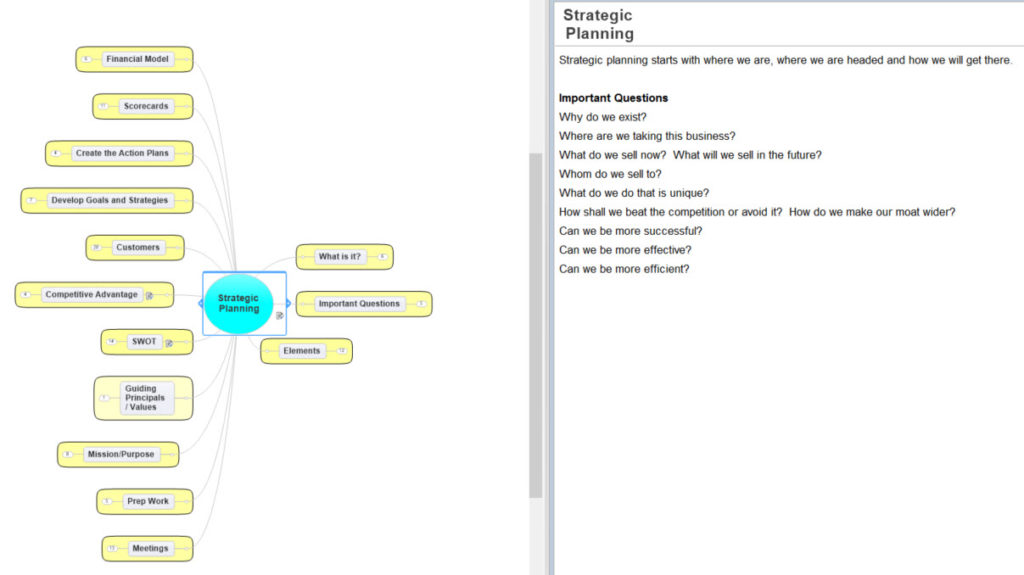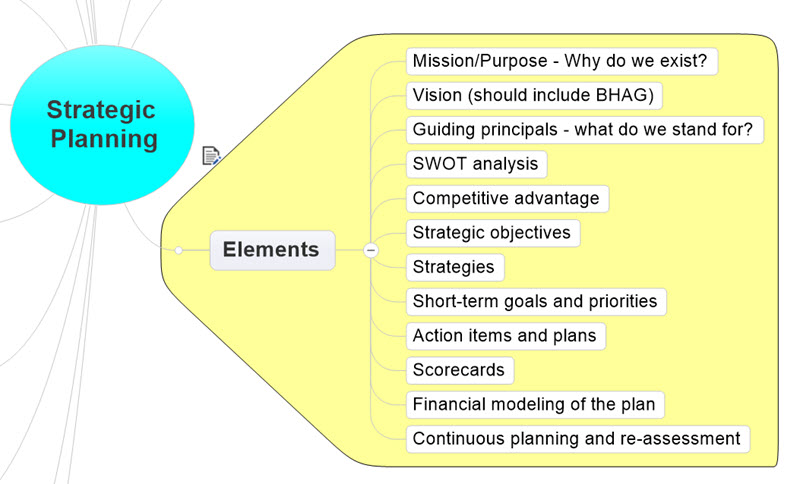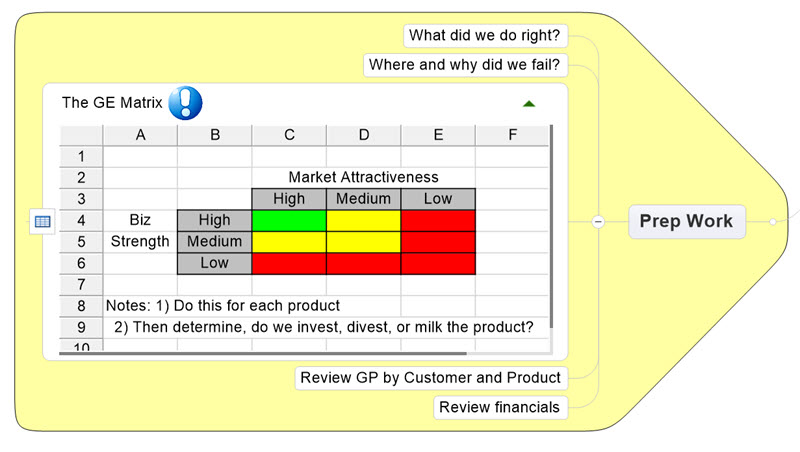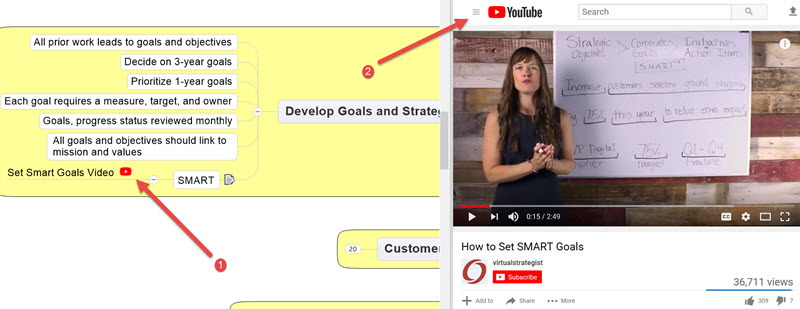I’m going to go out on a limb and assume you probably don’t mind map any of the books you read. If you do, it’s probably a rare occurrence. I use mind mapping software regularly, and I can count on one hand the number of books I’ve mapped.
More than 10 years ago, there was a slew of books written about strategic planning. I own many of them. During that time, I picked up Erica Olsen’s excellent book, Strategic Planning for Dummies since I felt like an idiot on the subject matter at the time.
I’m possibly the first person or the only geek to mind map this book. But more on this in a bit.

What is Mind Mapping?
Let’s assume you know nothing about mind mapping. Apologies if you’re a doctoral student on this subject.
Tony Buzan is the recognized founder or father of mind mapping. I have a hard time believing that because I nearly suffered seizures as a kid diagramming sentences in 1st grade. Okay, that was exaggerating. But my point is that people have probably been mapping ideas and concepts for years. Tony came along and gave the activity a name.
Buzan describes a mind map as a visual thinking tool of what goes on in our heads. The map itself starts with a central idea and then branches out with other associations and connections to that main node.
Mapping a Detailed Book
Now that you have your MBA in mind mapping, let me share some of my notes of Olsen’s book.
When I start reading a detailed book
At that point, I decided I wanted to use software to record notes as I knew I’d be reading the book from my desk. Otherwise, I’d be using a Moleskine with colored pencils. I decided against the manual route because I knew I’d easily fill 20 pages with messy notes.
I’m glad I used my mind mapping software which is MindManager. Not only have I been able to refer back to this map many times, I’ve also shared it with other users of the same software.
Mind Mapping Basics
My favorite part of mapping ideas is that I don’t need to write long notes. Blurbs or word slugs work fine. My mind takes over from there.

On the other hand, if I want to write short or long notes, my particular software includes a word editor.

Most mind mapping software applications allow users to include images. I typically don’t. But my version does allow me to insert spreadsheet grids (not be be confused with linking to xls files which is possible too).

Ever wish you could refer back to a video tied to a key point that you have read? The author has published dozens of videos on strategic planning activities including the one I show below. MindManager allows mappers to include links which then plays the video in its embedded browser. Cool stuff.

Mind Mapping is a Tool not a Toy
Meetings, scanning house plans (I’m in phase I of building a house), learning new ideas, simple research–I tend to map my notes in a Moleskin. For whatever reason, I expend fewer brain calories when referring back to my notes. They are just easier to read and follow.
My goal is not to turn you into a mind mapping wizard. I’m not even one myself. I’m just showing you one technique of capturing notes and ideas when reading longer texts that you wish to remain sticky in your head. You never know when you’ll need to retrieve that information from the deepest crevices of your mind.
Do you mind map some of the books you read? Which ones? How so?
Title Photo Source and Attribution: Wikimedia Commons

Leave a Reply